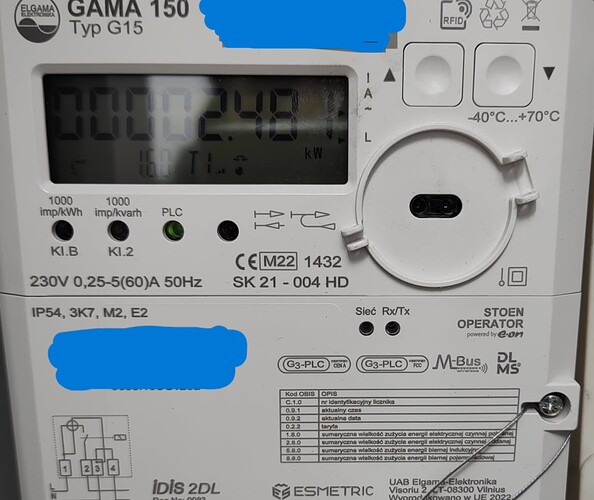@M_Stu, then you need a P1 reader. I would think that is better than the WMBUS, if your meter is in a closed place where nobody else can access it and you still have WiFi reception there. But I don’t understand STOEN’s description. What is the point of this?
P1 po złączu Ethernet bez otworu w obudowie (pod osłoną licznika) – GAMA150 i GAMA 350
How anybody can access that if it is under the cover??? It should be a user interface port…
From some point STOEN does an amazing job regarding this subject, even if it is not visible clearly. That article clearly identifies 3 different kind of interfaces, and it suggests that they support all 3 of them. ENEA seals the P1 port on the OTUS3 and turns it off remotely if you have and Iskra AM550 where the P1 port cannot be sealed and you ask for a decryption key. (Just to feel a bit of difference!)
Using a P1 port normally would be easy.
For the P1 port you need a device which can be connected there, like this one:
Or one like this:
This one is more interesting, because Home Wizard is interested to get into new markets, so they have some special program, if your meter is NOT listed on their site and you help them to make it work. For obvious reasons Poland is not on the list, but as far as I know STOEN is first DSO which offers the P1 port as an option. (Here to note the regulation allows the use of other communication standards with an “excuse”.)
For the Zuidwijk one you can likely use it with the preinstalled ESPHome and the DLMS component, but it all depends on the DLMS/COSEM implementation on the meter. (It is a terrible standard, lets phrase it shortly.) If the ESPHome one is not working then you can try to flash this one:
If the meter follows latest standards the P1 port would power the reader and you do not need any external power for that. Unless some requires a jump-start, for that usually you can use a powerbank.
The decryption code that you received is likely the code for the DLMS in your case. It should be a 32 character HEX number.
Also I have a bit of trouble to understand why they list the P1 port as Ethernet port. P1 is usually RJ12 and not RJ45. If RJ45, then it is usually called HAN port.
I would contact STOEN again about how the P1 port can be accessed. The linked article suggest that there is another version of the cover, which has a hole for the P1 port.
P1 po złączu Ethernet z otworem w obudowie licznika – GAMA150 i GAMA 350, MA110M i MA309M
Edit: Just fixed some typos. It was a bit late when I posted this…
